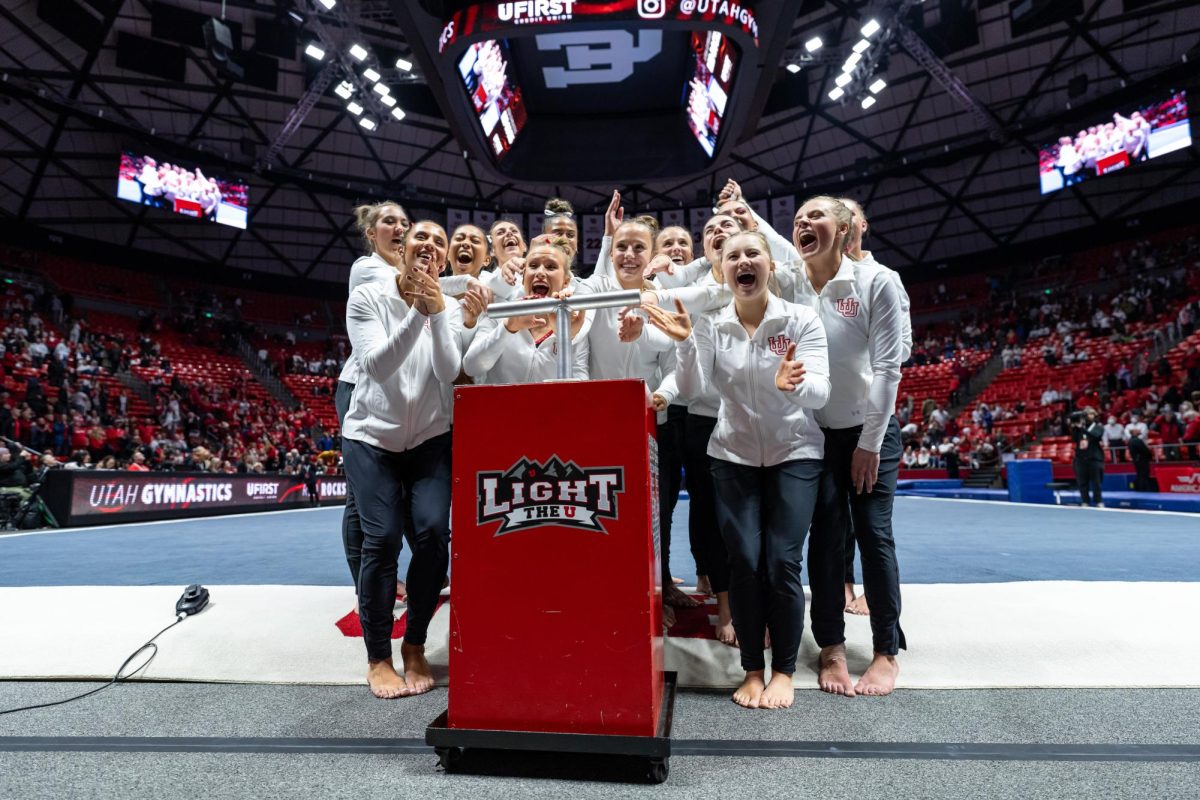Buening: We’re the Clean Energy Generation
(Photo by Kevin Cody | The Daily Utah Chronicle)
November 4, 2021
In Utah, we have access to many diverse landscapes, from canyons to mountains, deserts to salt flats. With this variance comes unique growth opportunities. Currently, our state is powered by everything from crude oil to renewable energies. We are only in the early stages of achieving a greater clean energy potential.
Utah is one of the top seven states for solar power potential. But in 2020, 61% of our electricity generation came from coal-fired power plants. A complete turnover to renewable energies is pivotal for planetary health. As of now, about 24 cities and counties in Utah have pledged to transition to renewable energy by 2030, Salt Lake City included. As a rising generation, it is our responsibility to push for this shift. Specifically, we need to utilize place-based renewable energies that are most effective for Utah’s landscapes.
Righting Previous Generations’ Wrongs
As unfair as it is, our generation inherited the climate crisis. Despite improvements, there’s no shortage of opposition. We rank fourth in the nation for natural gas production and fifth in oil production from public lands. The Salt Lake City area processes about 200,000 barrels of crude oil per day, earning the federal government $88.5 million in royalties.
Many continue to infringe upon the rights of our natural lands, illustrated by the Federal Bureau of Land Management’s reduction of Bears Ears to increase land for resource extraction in 2020. Righting these wrongs is a challenge, but one that we are brave enough to face. To speak to that bravery, I met with Kate Bowman, the renewable energy program manager for Utah Clean Energy.
As young people, we experience the most psychological distress from climate change. Luckily, our concern has spurred unrelenting activism. Bowman praised this resolve, saying, “Instead of waiting until they’re old enough to vote or to run for public office, students and younger generations are speaking up and demanding change.” Now, as we begin to move into professional capacities, we need to bring our demands to fruition.
Landscape Potential
A cleaner future is possible by suiting renewables to landscapes. For instance, land fills overflow with biomass. Microbial biomass conversion produces hydrogen, which, when consumed in a fuel cell, allows for cleaner fuel production. Utah has millions of tons of waste sitting in land fill sites, which produce dangerous methane gas during decomposition. Power Innovations, headquartered in Salt Lake, looks to convert this waste into an energy opportunity.
Geothermal opportunity lies in our high-temperature areas, while wind proves effective in the flatlands. With wind energy, we have the capacity to produce 277,746 megawatts of energy using current technology, yet we only generate 391. And our solar potential surpasses all else. Commenting on solar, Bowman pointed out its scalability. “You could have a solar farm in southern Utah that serves tens of thousands of homes.” Alternatively, you can “put it on your own home and produce energy in your own backyard.” She also pointed out that structures like parking garages could implement solar, as they currently only serve singular purposes.
On top of the potential we already have, there remains an infinite opportunity for advancement. A team of European engineers proposed a type of mountainous battery in 2019 that combats one of renewable energy’s greatest drawbacks: long-term storage. The battery stores material at elevation to produce gravitational energy, which would prove useful in Utah’s mountain ranges.
Creating our Future
Individually, we need to remain conscientious of our energy portfolios, as it benefits our finances and the environment. In 2020, renewables were the world’s cheapest source of energy. And, as Bowman said, “operation and maintenance costs, especially of a solar farm, are very low.”
Programs like Utah’s Renewable Energy Rebate Program make solar more feasible. Subsidies from the program can cover up to 25% of the cost of professionally installed systems. Even so, further implementation of clean energy will require more “investments in the energy transition over the next 10 to 15 years.” This requires a priority shift reliant on us. Our generation’s concern for the environment should inspire us to collectively push for more renewables in Utah, and everywhere else.
We cannot ignore any part of our clean energy potential. Our ambitions are not out of reach, especially with our combined effort. We can create a world where, as Bowman said, “individuals are empowered to make choices that are better for our climate.” We can make “doing the right thing the default, easy choice.” By replacing antiquated and harmful energy practices with modern, clean models, we can create a future that we deserve.













